Just How Far Can This 1995 Toyota MR2 Go?
Toyota had a minor hit on its hands when it introduced the MR2 sports car for 1985. With 112 hp from a 1.6-liter four, the 2300-pound, sharp-edged, mid-engine wonder was quick, agile, reliable, and affordable—all winning ingredients—and it was unanimously lauded by the motoring press and buyers alike. A 145-hp supercharged version available for 1988–89 offered even more smiles per dollar.
When the all-new Mk II arrived for the 1991 model year, it traded creases and corners for a smoother look, and it, too, quickly became a favorite among thrifty driving enthusiasts. The Mk II, or SW20, outweighed its predecessor by anywhere from 300 to 600 pounds but in return got a bit more luxury, sturdier components, and larger engines. It was also just a bigger car, adding nearly 9 inches in overall length and more than an inch in width. The base engine was a naturally aspirated 2.2-liter four shared with the Celica and Camry, which made 130 hp and 145 lb-ft of torque and came paired with either a four-speed automatic or a five-speed manual. The sexy option was a twin-cam turbocharged 2.0 liter making a nice round 200 horses and 200 lb-ft, with a five-speed stick the only transmission.
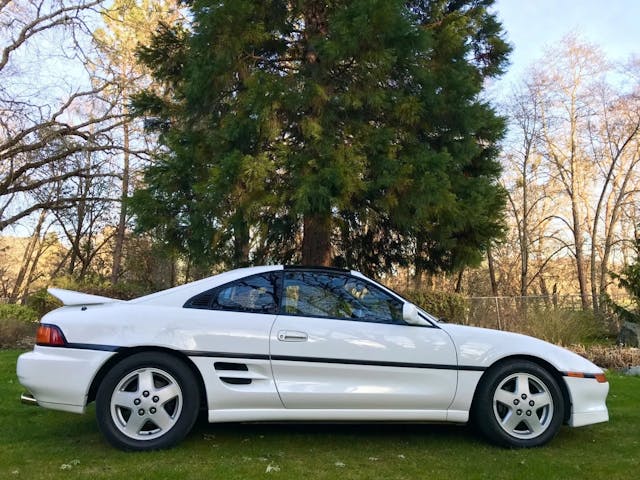
The beauty of the MR2 of (so named for its Mid-engine, Rear-drive, 2-seat configuration) is its underlying Toyotaness. It may look exotic, but it’s not. It’s not poorly made, and not fragile, either. If driven with care and properly maintained like any responsible adult should, there’s no reason not to get an indefinite amount of miles from one. Which, coincidentally, brings us to our Sale of the Week.
This naturally aspirated, 292,000-mile 1995 Toyota MR2 sold earlier this week on Bring A Trailer for $18,112, including fees. Curiously, the last MR2 to sell on the platform, a 1991 Turbo with just 76,000 miles that traded hands on March 22, did so for the remarkably close sum of $18,637. What’s up with that? Why would two stock MR2s, separated by four years of production, 70 horses, 216,000 miles, and two weeks in the market change hands for the same money? Probably because life makes no sense sometimes.

Then again, the bidders interested in our Super White subject car, owned all its life by one family (and by “the dad” for 27 of those 29 years) were clearly impressed by the care lavished upon it all this time. Rarity would seem to be at play, too: In 1991, Toyota sold nearly 4400 MR2 Turbos in the U.S. In 1995, the final year of availability, just 163 normally aspirated cars sold here.
The seller, the son of the car’s longtime driver, was full of praise for the way his dad babied this thing, and the photos—outside, inside, and underneath—all depict a car that belies such heavy mileage. “Shout out to my dad, who appreciates all things mechanical and treated this daily driver very well,” he wrote in the comments, going on to note that the paint is all original and has never even seen a touch-up, and that his dad replaced the timing belt every 60,000 miles. “He installed heavy seat covers on the original upholstery on Mile 6, and he has always kept the engine oil looking like golden honey.” Also, crucially, “no slurpies capsized on the interior” and there are “no petrified chili cheese fries stuffed under the seats.”
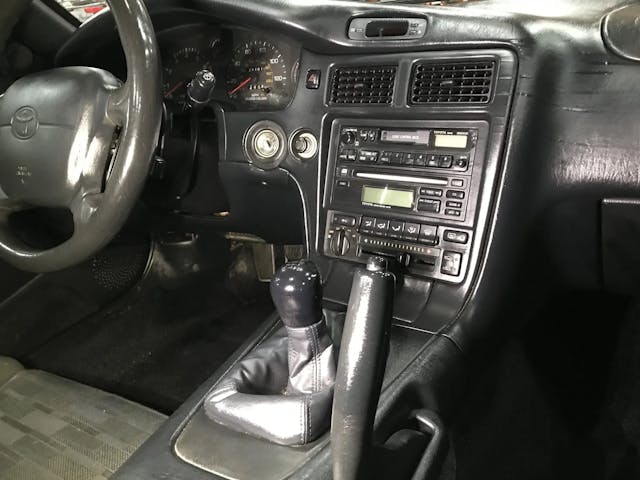
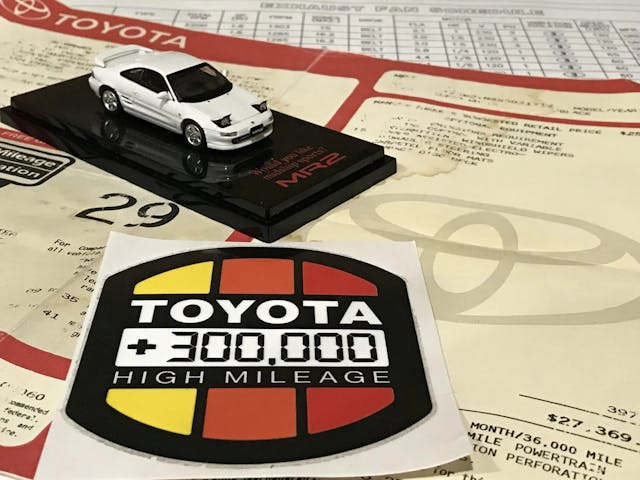
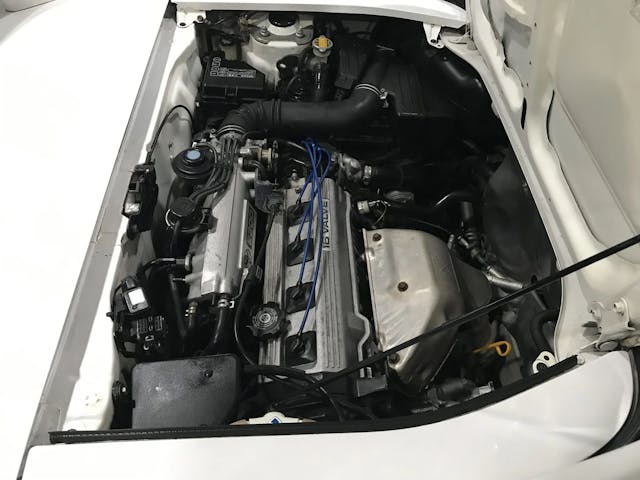

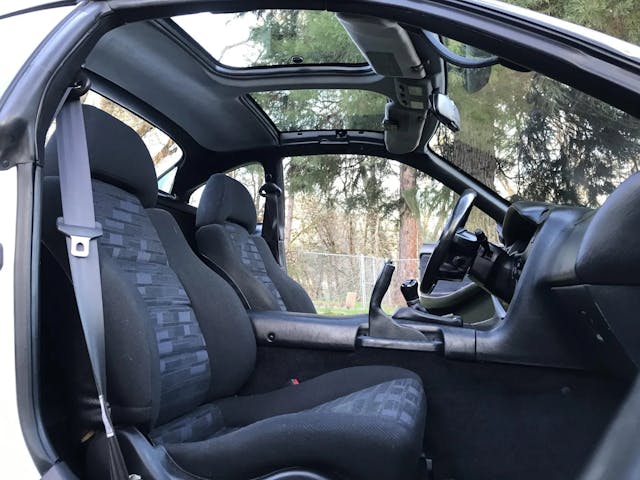
Recent-ish work to the car includes a head rebuild in the last eight years, with new engine mounts, valve cover gaskets, and clutch components in 2018, as well as a brake master cylinder replacement, new Kumho tires, an A/C recharge, and spark plug replacement in 2022.
As daily drivers go, this MR2 lived its best life as a commuter on back roads through a SoCal canyon—Highway 241 from Rancho Santa Margarita to Riverside—where it was then parked each day in a warehouse. Dad was an avid weekend skydiver, it seems, and “the trunk was a perfect size for his parachute gear.” Talk about the perfect vehicle for a quite specific use case…

There are of course flaws present (how could there not be?), but we’re talking small scuffs to the driver’s side door handle, some marred paint in the well for the spare tire, fraying in the trunk lining, and a few odd lines in the material of the dash on the passenger side. Oh, and the original key, while included, is useless, “worn down to the nub from 40,000 ignition twists.” But you just know that Dad saw to that: “The ignition was replaced and keyed to the door handles with two new keys about 10 years ago.”
Given its overall condition, this MR2 sold right where we’d expect it to; call it #3+ condition. There is so much to like about this car, beyond its totally ’90s pop-up headlights, T-top roof, and slim spoiler. That it was adult owned by an enthusiast who loved to drive it and appreciated its quality enough to keep it near-perfect, despite such incredible use, makes it an even rarer example of an already rare car. For those unbothered by mileage, it’s a great poster car. For its lucky new owner, like some commenters on the sale noted, we hope it’s only a short time before you get to slap on the 300,000-mile sticker included with the sale, and then keep on going indefinitely.
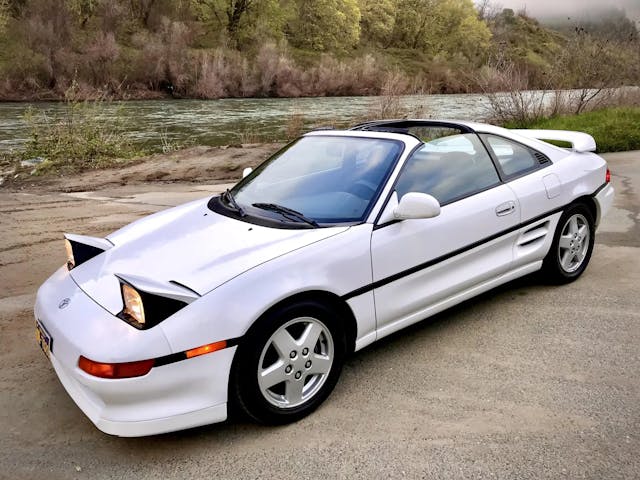


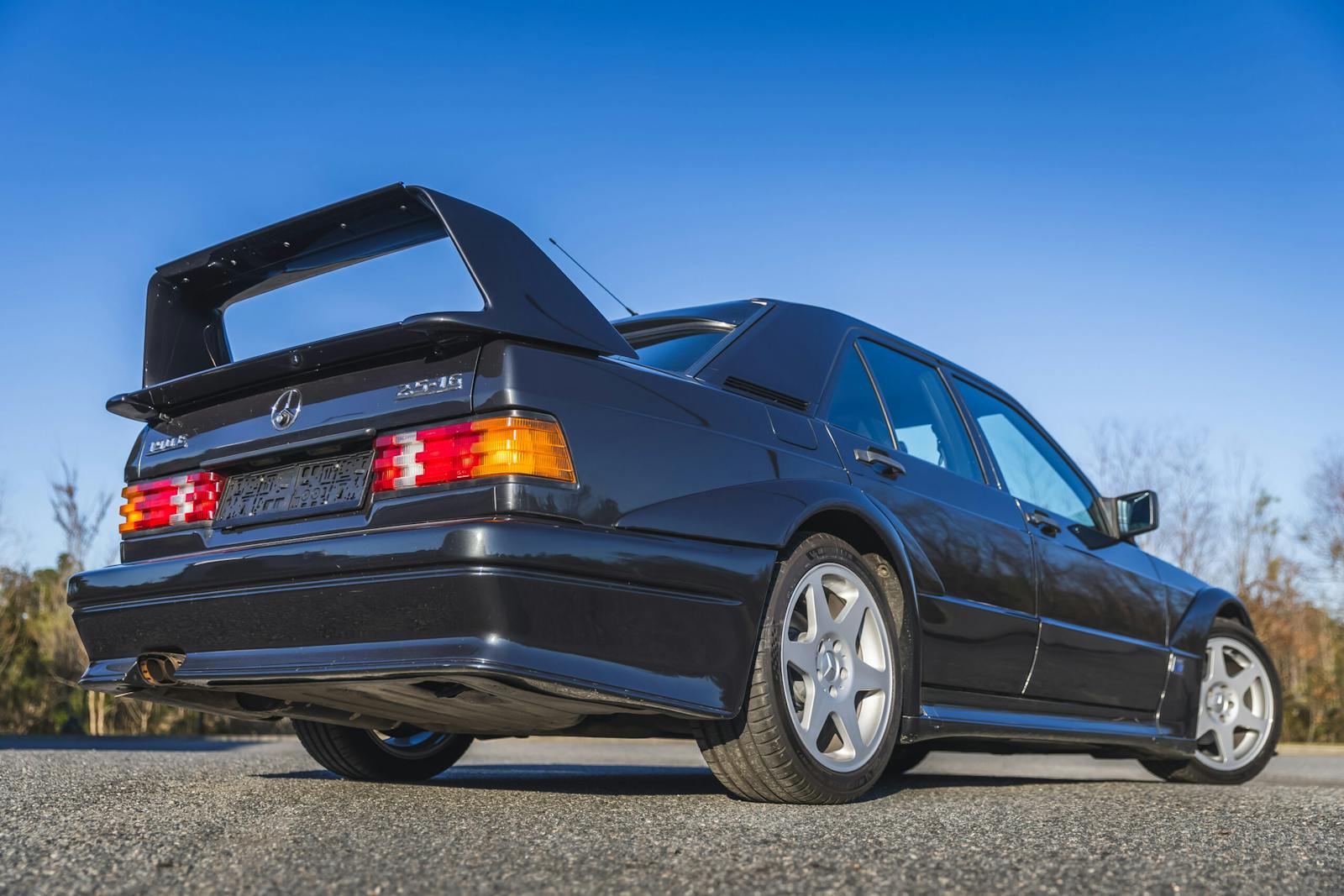
It went over priced because rust free is hard to find. These cars in the mid west are a rarity let alone a clean one.
The real question is at what cost did it do that many miles. Up keep is not easy and many things require the engine to come out.
Maybe being a naturally aspirated engine helped. I know turbocharging has been around for over a hundred years. I know they work. I know they are a proven technology and that technology has constantly improved. I know that in any average parking lot you’ll find that ‘T’ on one or more car badge. Still intuitively having that snail scroll up to 100,000 rpm or more.. if you do the math, how many miles until that’s some crazy to the tenth power number. Ever get the feeling that, like life, sometimes engines don’t make sense either?
Have you ever worked on a mid-engine car like the MR2? Major PITA. And “rarity” usually doesn’t ascribe to models that just didn’t sell well originally (163 out of 4400+). They’re still undesirable. I once had a guy ask me in a forum if his 1969 Mustang Sports Roof (that’s a fastback to you civilians) was worth more because it was rare. It was an original 6 cylinder car. Yawn!
Ken,
Not all mid-engine cars are a pain to work on. I’m familiar with three that fall into that category: FIAT’s X1/9, Lancia’s Scorpion/Monte Carlo, and the Lotus Europa; I’m sure there are others.
On the other hand, ever tried changing the plugs on a V-6 Contour? 😉
My son has a 1991 non turbo MR2. I understand the appeal of the car but the “it’s a Toyota so you can drive it forever” is BS. They don’t support this car anymore. Normal wear items like clutch cables, hubs, tie rod ends, ANYTHING to do with the body are all getting extremely scarce.
Alex,
Actually, that is simply not true for a 1991 MR2. The clutch is hydraulic, hubs are not a wear item, and tie rod ends are available directly from Toyota. Everything suspension related, from ball joints, strut assembly parts, arms, even portions of the rear toe arms, sway bar links, bushings are all available still for even the previous generation 80s MR2s straight from Toyota. I just put together an entire engine starting from a bare block, and buying even bolts and nuts from Toyota for the engine.
The engine is a 5S-FE 2.2. This car is almost done the break-in period which is at 300k. It is super easy to work on this car, so much room and actually easier than the same engine inside a Camry/Celica because the power steering components, ABS brick, master cylinders, and battery aren’t in the way when the motor is in an MR2. Timing belts and water pumps are done in an hour flat even when you have to replace the oil pump oring on the sandwich plate. I’ve dropped a clutch in 2 hours on the floor on my back.
Also, hyperv6, I did a hose from hell on a Turbo. It does not require engine out. You just need to remove the oil cooler sandwich plate under the filter then it’s free to access.
Great car, should last another 200k.
I have a V6 Fiero and it’s no more difficult to work on than any FWD.
Trouble comes in on some of these cars when you have to change timing chain or such on the OHC engines.
I believe the Non Turbo is not to bad but the Turbo is a problem as there is the Hose from Hell they call it. It is a $13 hose that requires the engine to come out at 90K miles. At that point it was recommended to change the Timing chain, water pump and have the turbo looked at.
https://www.youtube.com/watch?v=ydnRWEhKMn0
My Fiero has been easy to work on no crazy repair and what I have had to do was cheap the engine did not have to come out.
I have been at events where even the Iron Duke cars are represented by 300K mile cars. Like any car you take care of it they will last. Accept maybe a hand full of cars.
My uncles S10 went 300K plus miles even with out perfect care.
I’ve known plenty of 2nd gen MR2 Turbo and non-turbo owners. Ultra reliable cars. Typical Toyota do the maintenance and have a generally worry free life. This car like any other is most likely to have problems when you start to improperly mod it. Mid engined can be a pain to do some bits of maintenance but for the most part these are an easy car to live with.
As Hyper and Gary said, many cars will go high miles IF TAKEN CARE OF. Among family here are 6 vehicles, each with over 100K miles; 2 Toyotas, 2 Honda products, a Dodge (5.9 auto), and a Grand Cherokee (6 cylinder). A Toyota and the Honda (and Acura) each have over 200K miles, and all still run great. Finding body and/or interior parts for them will eventually be their demise. This car had the advantage of being taken care of and of living on the west coast. Even after the son took possession, The Dalles is on the east side of the Cascades where the climate is dry and fairly hospitable to cars.
I’m sorry but that is a ridiculous price to pay for a nearly 300,000 mile car. Toyota or not this car will need major repairs that comes naturally with age and mileage. The type of parts failures, that one incurs with a high mileage car, will range from heater motors/ heater cores, to gas tanks / gas lines, to engine / transmission mounts, suspension components, general drivetrain consumables and most likely a series of electrical gremlins. It is always better to buy a better lower mileage car, you will pay more up front but in the long run it will be a cheaper route.
I have a friend who has one of these with plates that say JAPF355
He then bought an F355 which has plates ITALMR2
Norm has a point. It’s also frequently the little things that drive you crazy and end up being a major hassle to fix. There is also the phenomenon I call becoming ‘tone deaf’. I’m not talking about that metal on metal sound that some people simply choose to ignore. It’s those things that ,over the course of time , become normalized. Not a lack of due diligence, not ignoring a problem,not keeping up on maintenance but… five years ago you would have felt/heard but have so slowly crept in day by day that it doesn’t quite register. And I rarely have the stereo playing ,always listening for, to my ride. Like getting a new set of tires for example. Not that you drove the last set down to the cords or anything like that. Just that fresh retire is a more noticeable improvement than you would have thought. The saying “it’s not the year it’s the mileage ” is sort of true but in reality it is both. Everything gets a little more tired over time you can’t stop that from happening. When you put them all together…it’s an old (er) car.
Clearly some of the posters have not owned Toyotas. I have for about 40 years. Only one electric gremlin ever. The buzzer on my 330,000 mile Tundra stopped buzzing. (Personally happy about that so never fixed it.) That is it. While it is true that every car has wear items my experience with Toyotas is they are over engineered so they last far beyond any reasonable expectation.
I have a MK1 Supercharged MR2. It has 217,000kms(I’m in Canada). Last October I had the engine removed and had every hose, gasket and fluid changed. Timing Belt and water pump changed. Transmission Changed. Distributor Changed. I think I’m good for another 217,000kms!! Cost me a fortune because I’m no mechanic though,,,,lol